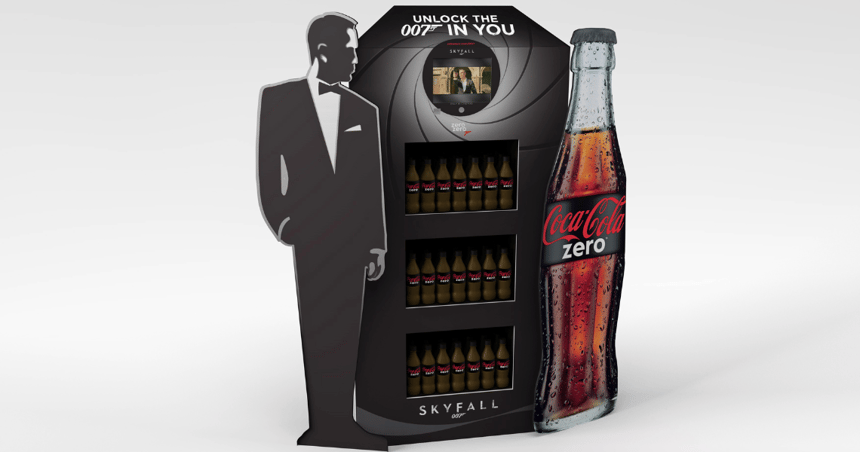Discover how POS displays can significantly increase your sales and attract more customers to your business.
Why POS Displays are Essential for Boosting Sales
POS displays are an essential tool for boosting sales in retail environments. These displays are strategically placed in high-traffic areas to attract the attention of customers and promote specific products or promotions. By showcasing products in an appealing and eye-catching way, POS displays can significantly increase sales.
One of the main benefits of POS displays is their ability to grab the attention of customers. In a busy retail environment, it can be challenging for products to stand out among the competition. However, with the right POS display, you can create a visually appealing and attention-grabbing presentation that will draw customers in. This increased visibility can lead to higher sales and a greater return on investment.
Another reason why POS displays are essential for boosting sales is their ability to influence customer behaviour. By strategically placing displays near checkout counters or in high-traffic areas, you can encourage impulse purchases and increase the average transaction value. Additionally, by customising POS displays to showcase your brand and products, you can create a memorable shopping experience that will leave a lasting impression on customers.
In summary, POS displays are essential for boosting sales in retail environments. They grab the attention of customers, influence their behaviour, and create a memorable shopping experience. By utilising POS displays effectively, you can significantly increase your sales and attract more customers to your business.

Designing Eye-Catching POS Displays
Designing eye-catching POS displays is crucial for capturing the attention of customers and driving sales. The first step in designing an effective POS display is understanding your target audience and their preferences. By understanding what appeals to your customers, you can create a display that resonates with them and encourages them to make a purchase.
When designing a POS display, it's important to consider the visual elements such as colors, images, and typography. These elements should be cohesive with your brand identity and product offering. Use vibrant colours and high-quality images to create a visually appealing display that stands out in the retail environment.
In addition to visual elements, consider the layout and organisation of your POS display. Arrange your products in an intuitive and logical way that makes it easy for customers to browse and find what they're looking for. Use signage and clear product descriptions to guide customers and highlight the features and benefits of your products.
Lastly, don't forget to regularly update and refresh your POS displays. A stale or outdated display can quickly lose its impact and fail to attract customers. Keep up with current trends and seasonal promotions to ensure your displays remain relevant and eye-catching.
In conclusion, designing eye-catching POS displays requires understanding your target audience, using visual elements effectively, organising your products strategically, and keeping your displays fresh and up-to-date. By following these guidelines, you can create displays that capture the attention of customers and drive sales.

Strategic Placement of POS Displays
Strategic placement of POS displays is key to maximising their impact and driving sales. The goal is to position your displays in high-traffic areas where they will attract the attention of customers and encourage them to make a purchase.
One effective placement strategy is to position your displays near the entrance or exit of your store. This allows customers to see the display as soon as they enter or leave, increasing the chances of them making a purchase. Additionally, placing displays near checkout counters can capture the attention of customers who are already in a buying mindset.
Another strategic placement option is to position your displays in areas of the store where related products are located. For example, if you sell cosmetics, placing a POS display near the skincare aisle can attract customers who are already interested in beauty products. This targeted placement can lead to higher conversion rates and increased sales.
Furthermore, consider the height and visibility of your displays. Ensure that they are positioned at eye level and are easily visible from various angles. This will maximise their impact and make it easier for customers to notice and engage with the display.
In summary, strategic placement of POS displays involves positioning them in high-traffic areas, near entrances or exits, and in proximity to related products. By considering the height and visibility of the displays, you can maximise their impact and drive sales.
Customising POS Displays for Your Brand
Customising POS displays for your brand is essential for creating a cohesive and memorable shopping experience. By incorporating your brand elements into the displays, you can reinforce your brand identity and differentiate yourself from competitors.
Start by incorporating your brand colours and logo into the design of the displays. This will create a consistent visual identity and make your displays easily recognisable. Additionally, consider using fonts and typography that align with your brand's aesthetic.
Furthermore, customise the messaging and content of your POS displays to reflect your brand's unique selling points and value proposition. Highlight the features and benefits of your products in a way that resonates with your target audience. Use language and tone that align with your brand voice to create a cohesive and authentic experience.
Finally, consider incorporating interactive elements into your POS displays. This can include touch screens, QR codes, or product demonstrations. These interactive elements not only engage customers but also provide an opportunity to collect valuable data and insights about customer preferences and behaviour.
In conclusion, customising POS displays for your brand involves incorporating your brand colours, logo, fonts, and messaging into the design. By creating a cohesive and authentic experience, you can reinforce your brand identity and create a memorable shopping experience for customers.
Measuring the Effectiveness of POS Displays
Measuring the effectiveness of POS displays is crucial for understanding their impact on sales and making informed decisions for future campaigns. By analysing key metrics, you can determine the success of your displays and identify areas for improvement.
One important metric to track is sales data. Compare the sales of the featured products before and after the deployment of the POS display. This will give you a clear indication of the impact the display had on sales. Additionally, track the average transaction value and the conversion rate to assess the overall effectiveness of the display in driving sales.
Another metric to consider is customer feedback. Conduct surveys or gather feedback from customers to understand their perception of the POS display. Did it catch their attention? Did it influence their purchase decision? This qualitative data can provide valuable insights into the effectiveness of the display.
Furthermore, consider tracking foot traffic and dwell time near the POS display. This will give you an idea of how many customers were exposed to the display and how long they spent engaging with it. This data can help you evaluate the visibility and engagement levels of the display.
In conclusion, measuring the effectiveness of POS displays involves analysing sales data, gathering customer feedback, and tracking foot traffic and dwell time. By monitoring these metrics, you can assess the impact of your displays and make data-driven decisions for future campaigns.
